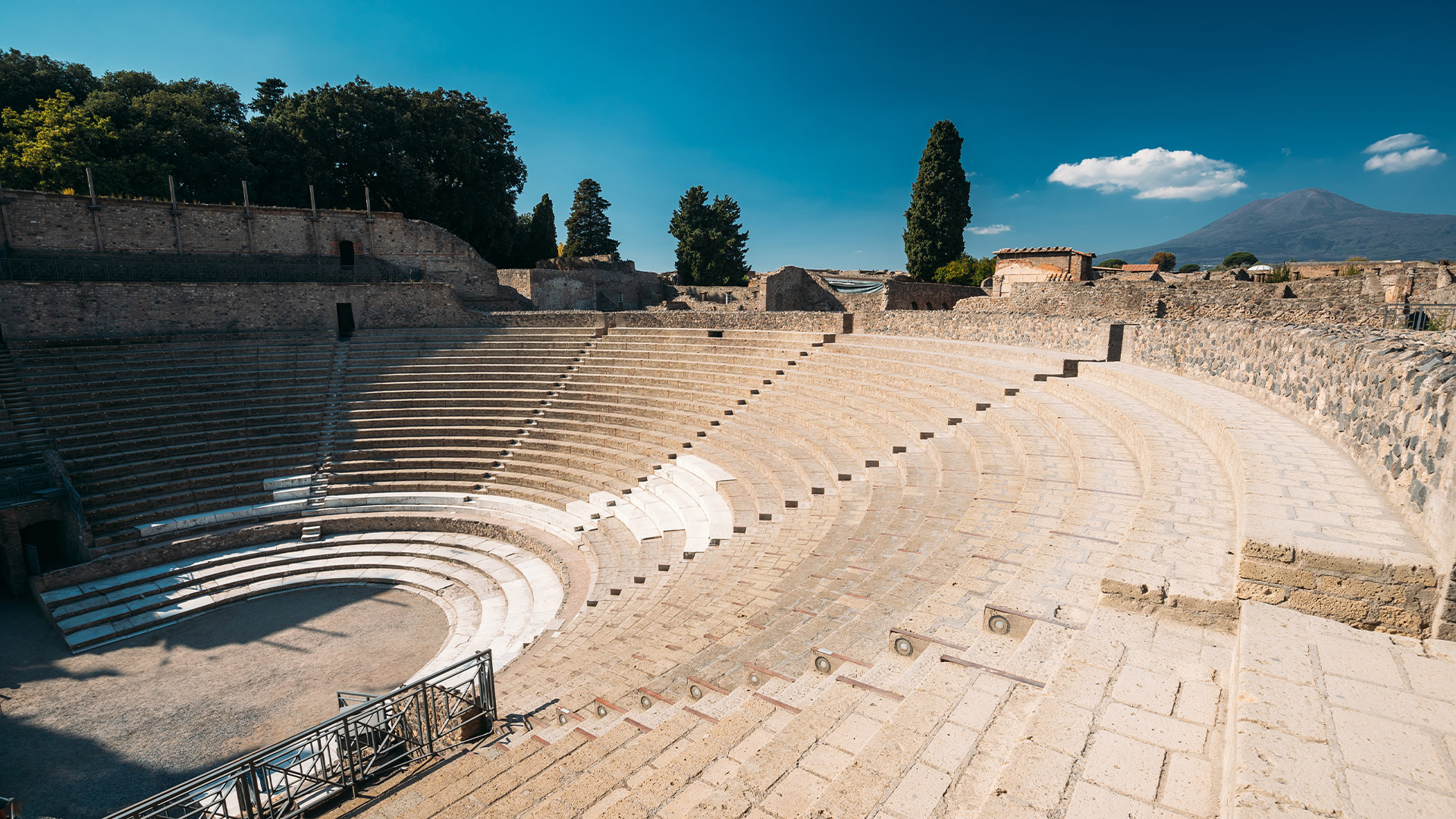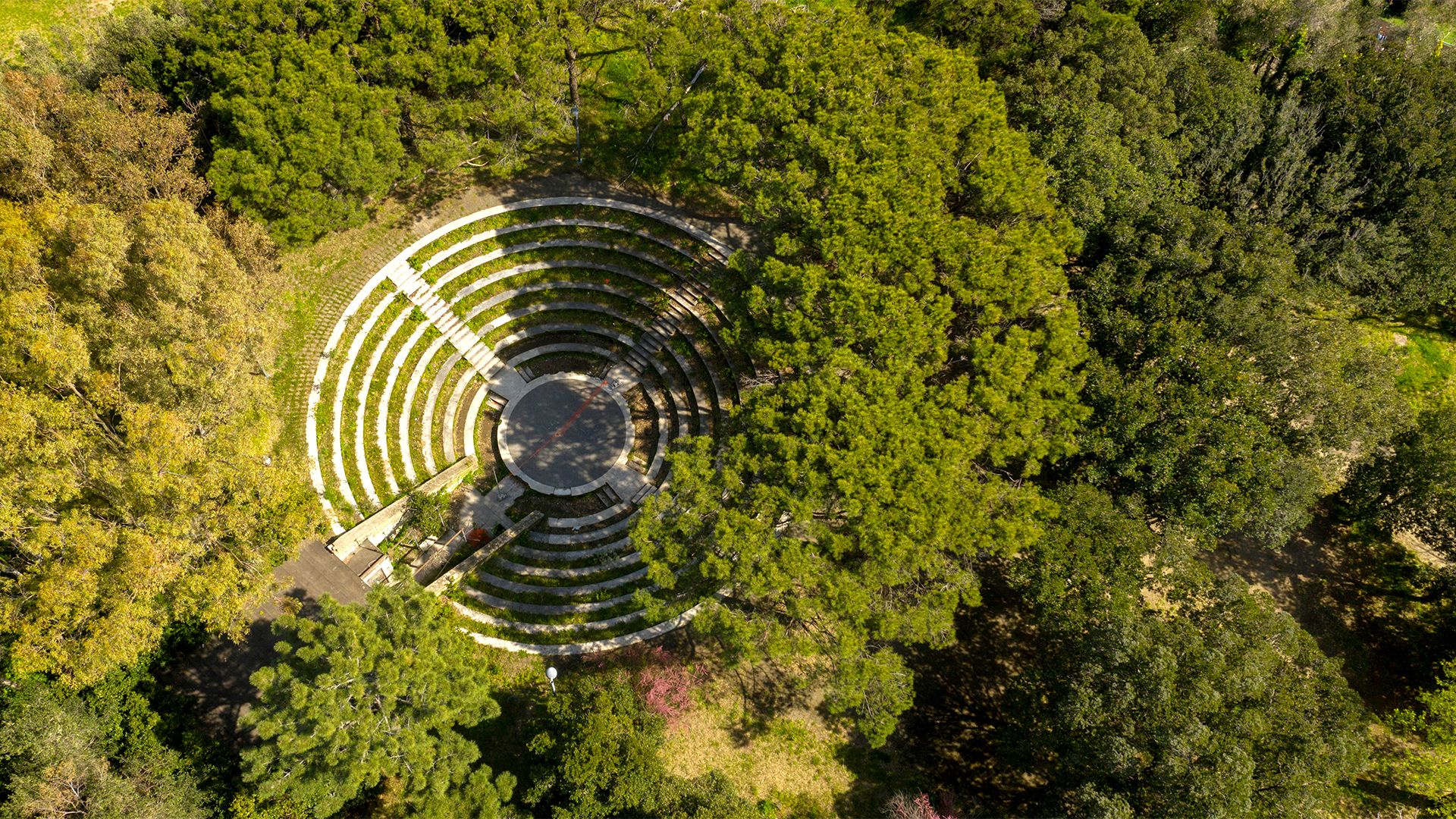ompeii is not a museum: it is a city waiting to be rediscovered every day. Every stone, every fresco, every everyday object tells a story that belongs to us. On October 24, 79 AD, when Vesuvius erupted with a fury that still rewrites the textbooks of volcanology, it never imagined it would leave humanity with the most extraordinary archaeological heritage ever preserved. In a few dramatic hours, incandescent lapilli, volcanic ash, and pyroclastic flows sealed forever two jewels of the Roman Empire: Pompeii and Herculaneum. It was not a simple destruction but the most perfect process of natural preservation in recorded history. That catastrophe has become the most precious gift to future generations, constituting the most authentic window we have into Roman civilisation. From the Santa Chiara Boutique Hotel, this theater of eternity is within your reach. Are you ready to learn more in this article?
Pompeii: an Initial Look
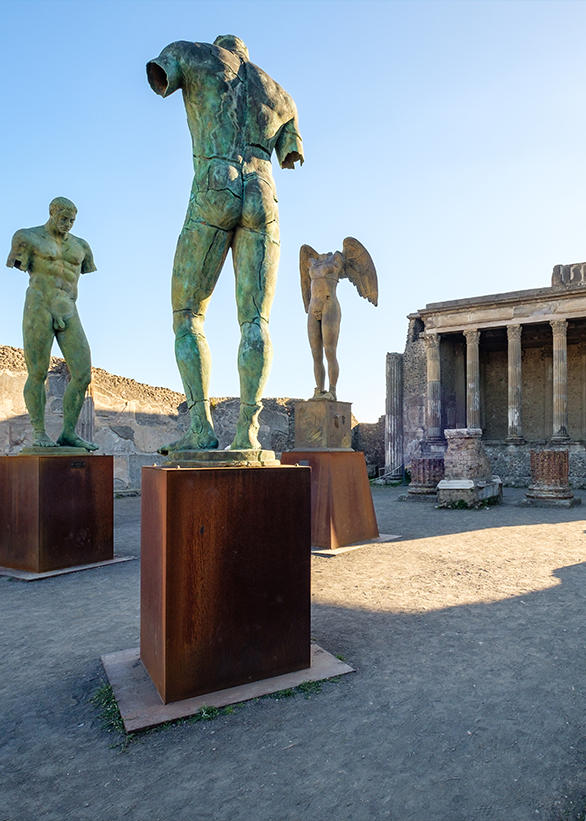
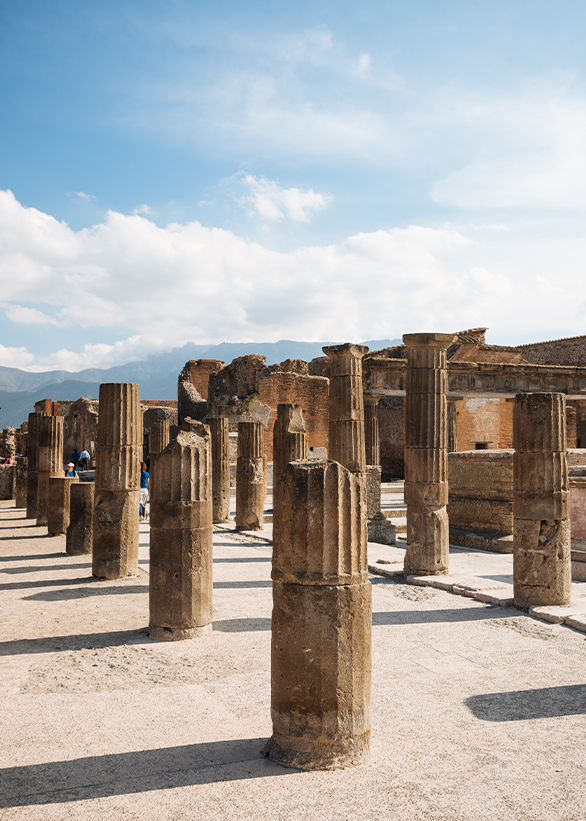
In Pompeii, a cosmopolitan crossroads, the Roman Empire showed its most refined and dynamic side. With its 66 hectares and a population of 15,000, it regularly hosted 20,000 spectators in the amphitheater, drawing crowds from the South for the legendary gladiatorial games.
The city boasted a surprisingly modern urban plan: paved streets with sidewalks, public fountains at every intersection, an efficient sewer system, and shops that predated the concept of shopping streets by two thousand years. The patrician houses, with their colonnaded atriums, flower-filled peristyles, and Fourth Style frescoes, speak of a society that had made aesthetics a shared necessity rather than a privilege.
Today, Pompeii is experiencing a new revolution, both archaeological and digital.
Present Discoveries Illuminating the Past
Indeed, Pompeii continues to speak to us, revealing secrets that redefine our vision of antiquity. The beginning of 2025 saw intense archaeological research, such as that at the Villa of the Mysteries, where new investigations have revealed previously unseen details of the already legendary complex.
The House of Phaedra, in Regio IX, has yielded breathtaking mythological frescoes, including the myth of Hippolytus and Phaedra — much more than mere decoration. The Insula of the Chaste Lovers, on the other hand, has offered us a glimpse of intimacy and sensitivity: a fresco depicting two elegant lovers at a banquet overturns the idea of the Romans as crude conquerors, replacing them with an image of refined aesthetes. During the most recent excavations, the remains of two victims of the eruption, perhaps a father and son, have also resurfaced. The plaster casts, refined using 3D technology, reveal expressions and details that create a direct emotional connection to that tragic moment.
The House of the Lararium: When the Gods Dwelled with Humans
Among the most touching recent discoveries, the House of the Lararium of Achilles stands out, a true treasure trove of domestic spirituality. The lararium—a small altar dedicated to the Lares, the protective deities of the home—stands in a courtyard adorned with extraordinary wall paintings depicting exotic landscapes, fantastical animals, and mythological scenes. At the center of the courtyard, a large cistern harmoniously coexists with the painted decoration, suggesting that the sacred and the everyday were constantly intertwined in Pompeian life.
This house demonstrates how even middle-class families could afford meticulously maintained and deeply symbolic spaces, investing in beauty not only as an aesthetic ornament but as an expression of devotion, protection, and identity. Domestic worship was therefore not the exclusive preserve of the elite: the Lares, the Penates, and the Genius of the pater familias watched over every home, small private temples where the divine became intimate and reassuring.
A few meters away, in a domus near the House of Leda and the Swan, 13 terracotta figurines were discovered, neatly arranged as if in a ritual suddenly interrupted. These are small votive representations—perhaps minor deities or ancestors — that tell of simple yet profoundly spiritual gestures such as offerings, invocations, and protection for the family.
The discovery sheds new light on an often overlooked aspect of antiquity: religion as a domestic and personal practice, made up of small rituals, cherished images, and spiritual protection. Not just large temples or public ceremonies, then, but also silent moments of connection with the sacred, enjoyed within the walls of the home.
Thermopolia: Refreshment Places of Antiquity
Let’s now turn to one of the most fascinating discoveries of ancient Pompeii’s social life: the thermopolia. These “fast food joints” of the Roman Empire, with their decorated counters and dolia (large jars) used to keep hot food hot, reveal a surprisingly modern urbanity.
The Regio V thermopolium, completely excavated in recent years, has yielded not only perfectly preserved structures but also charred food remains, which archaeologists have analyzed to reconstruct the Pompeian diet, consisting primarily of gave, walnuts, olives, and the remains of duck and pork: a menu that reveals the tastes and eating habits of two thousand years ago.
The Living Face of the City: Domus, Forum, Baths, and Amphitheater
For all of the above and much more, strolling through Pompeii means traversing a still-vibrant urban environment. The elegant domus, such as those of the Orchard, the Lovers, and the Ship Europa, recount the daily life of a society that had made luxury and aesthetics a form of collective, rather than exclusive, identity. Each frescoed room, each flower-filled peristyle, is a window into the Roman soul. The Forum, the political, economic, and religious heart of the city, with the temples of Jupiter and Apollo and the majestic Basilica, revealed the institutional face of the city, while the Stabian Baths and those of the Forum, with their refined mosaics, decorated stuccoes, and ingenious heating systems, were centers of well-being and daily social life. No less important was the Amphitheater, capable of seating 20,000 spectators: an arena of emotion where graffiti celebrated gladiators as folk heroes and where the logistical organization rivaled even modern stadiums.
In every stone, Pompeii reveals its extraordinary modernity.
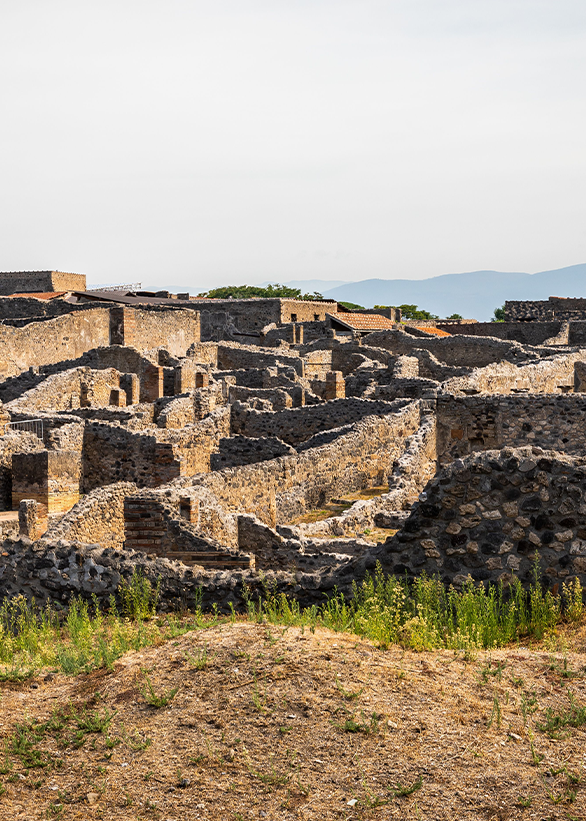
Graffiti: The Voice of the People
We conclude by exploring graffiti, one of the most touching aspects of this open-air archaeological site. Among the wonders unearthed by the latest excavation campaigns at the Pompeii Archaeological Park are drawings that appear to have been made by a child nearly two thousand years ago.
These childish drawings, along with the thousands of inscriptions covering the city’s walls, represent the democracy of eternity: alongside the frescoes commissioned by the rich, the voices of the humble, of children, of lovers, and of the irreverent have found their immortal space.
“Marcus loves Spendusa” reads a wall on the Via dell’Abbondanza. “Celadus makes the girls sigh” is graffitied on a wall of the amphitheater. These messages, more than any official document, convey the vibrant humanity of a city that was unaware of its final days and that dreamed, intensely, until its final moments.
Villa of the Papyri and the New Frontiers
In any case, “Pompeii’s future lies outside Pompeii.” This could be a summary of the Park’s growing awareness and direction in its strategic choices of action and excavation activities, focusing on the territory outside the ancient city walls.
The suburban villas, production complexes, and external sanctuaries are revealing new aspects of Roman territorial organization. The Villa of Civita Giuliana, with its mosaics and thermal baths, demonstrates how Roman luxury extended well beyond the city limits.
The Digital Revolution in Archaeology
Under the leadership of Gabriel Zuchtriegel, the Archaeological Park of Pompeii is undergoing a technological revolution. Thanks to digital technology and the e-journal, a platform inspired by the value of open access, the public can follow discoveries in real time, transforming each excavation into a global event.
The plaster casts, made by pouring liquid plaster into the cavities left by the bodies in the ash, are now enhanced with 3D scanning that reveals details otherwise invisible to the human eye.
You can learn more here.
The elevated walkway: Pompeii from above
Finally, one of the most spectacular innovations of recent years worth noting is the elevated walkway at Pompeii. From May 28, 2024, it will be possible to admire the domus and excavations from above. The unique suspended walkway that allows this route offers visitors a unique perspective, allowing for a fully immersive experience.
Taking this route means flying over two thousand years of history, observing perfectly preserved urban planning, cobbled streets and well-preserved public fountains.
From Santa Chiara to Pompeii: A Journey Through Time
From the Santa Chiara Boutique Hotel, reaching Pompeii means embarking on one of the most exciting cultural journeys in the world. The Circumvesuviana train, departing from Naples Central Station, will take you to the heart of antiquity in just 40 minutes.
Alternatively, our private transfer services will transform the journey into a cultural preview, passing through Vesuvian landscapes steeped in history and beauty.
We are ready to welcome you and create a special itinerary tailored to your needs.
Here you will find the answers to the most frequently asked questions.
Here you can book your next dream trip right away.
Live your adventure in Naples, choose the perfect room to discover the city and everything it has to offer. We will be happy to welcome you.


